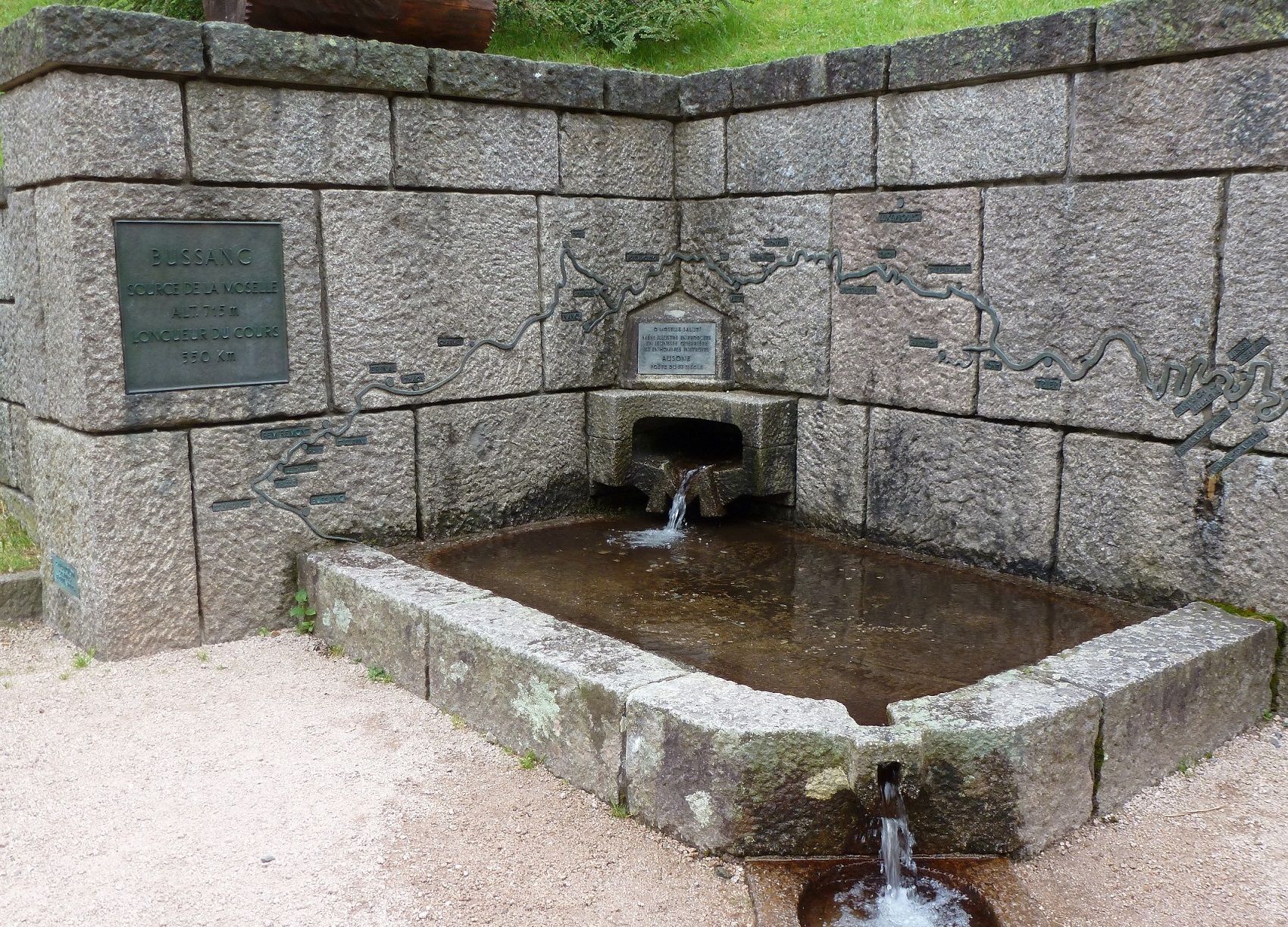With its source high in the Vosges Mountains of the Alsace region of eastern France and its terminating by flowing into the river Rhine of western Germany the River Moselle was our next famous river to follow along its full length . We decided to follow our chosen river against the flow i.e. from mouth to spring. The reason being to then explore the Alsace region afterwards. Our Moselle adventure started properly at the very convenient campsite at Koblenz. Not the cheapest site we have been on (33 euros a night). With it being alongside both the rivers Rhine and the muddy Moselle, where the latter joined the former and overlooking the city of Koblenz, it was an ideal place to start.
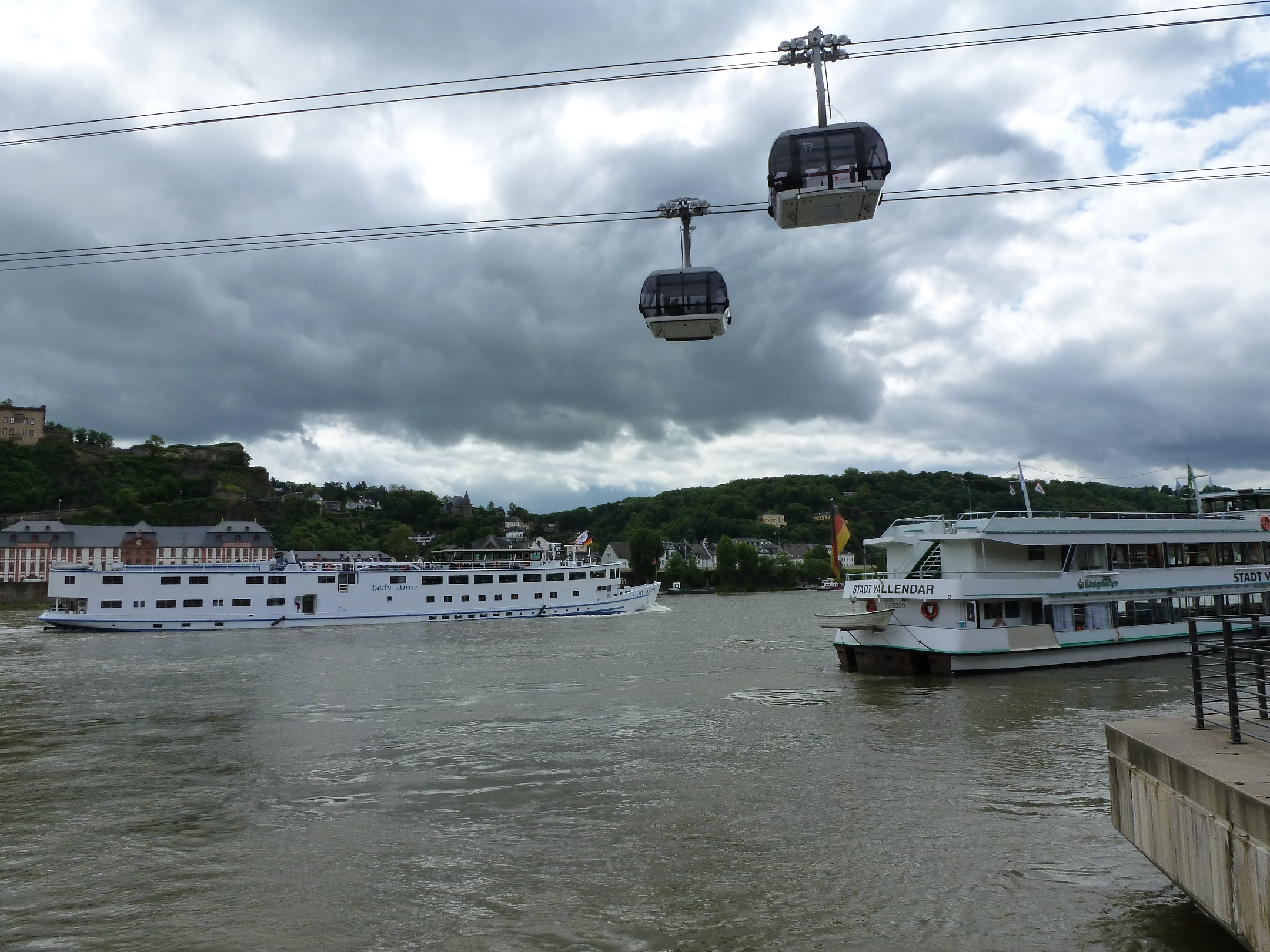
The three days spent here were taken up with seeing the sights this old place had to offer. To walk into the city meant going over the river bridge about a mile upstream, which we did in the rain. This brings you at a convenient place for the water side path to the promenade and the boat quays. A lot of the tour/cruise boats were tied up because with all the recent heavy rain the river Moselle level was too high to enable them to go under the bridges. So the cruise boats were bussing their passengers upstream to the delights of the wine route. An easier way to the city was by the small ferry leaving from next to the campsite, good value at 2.60 euros return, this lands on the opposite bank near to the gardens, ideal for the old part of Koblenz. Once there you could take a cable-car across the Rhine and up to the Festung one of the largest fortresses in the world.
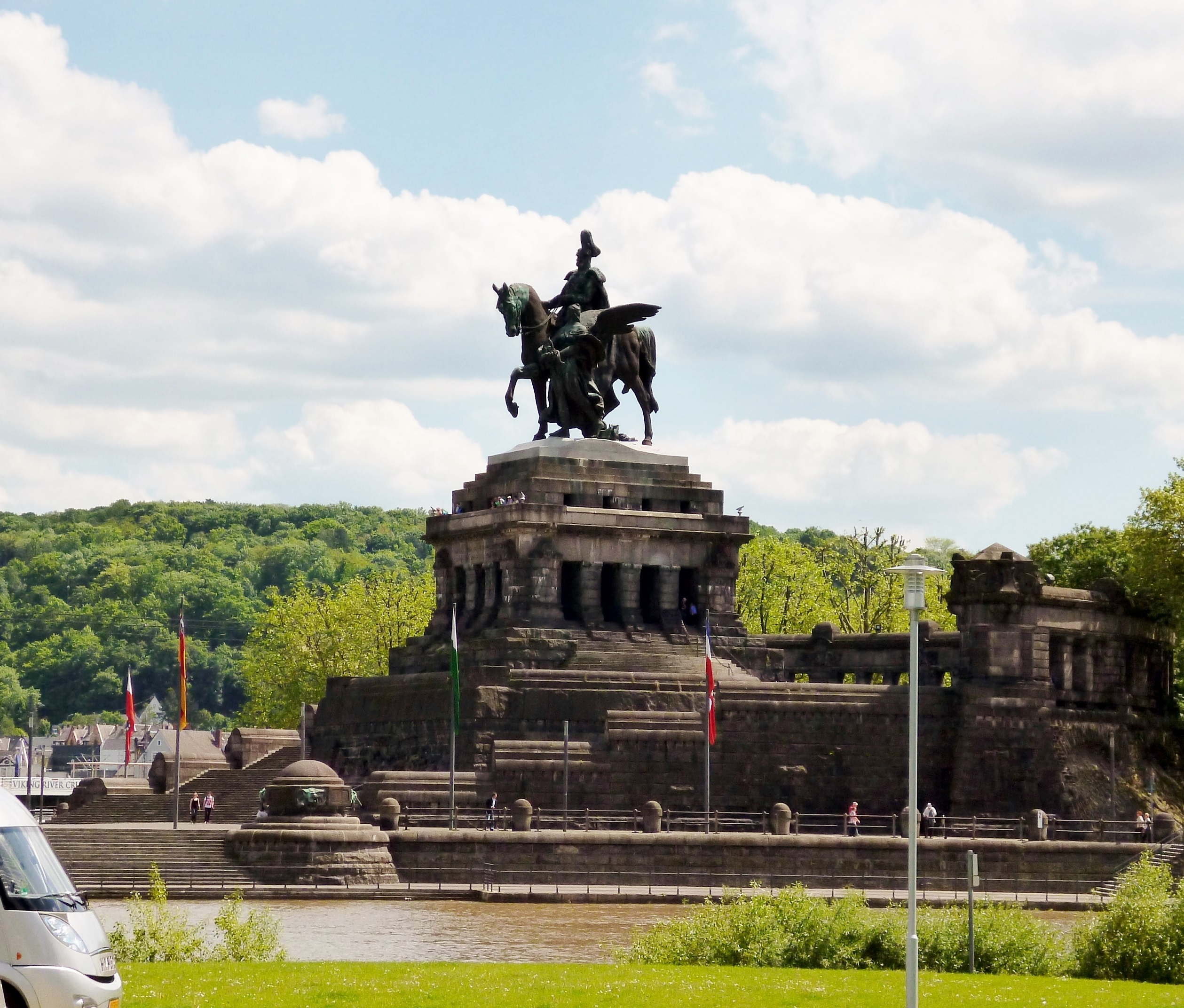
Near the apex of the Koblenz promenade areas, with the Rhine one side and the Moselle on the other, stands the magnificent statue of Kaiser Wilhelm 1 on horseback, standing high on a huge plinth with steps leading up and inside, where the view from just below the horses’ giant feet is quite something. Our quest to follow the muddy waters of the Moselle had now begun at its confluence with the fast flowing Rhine. We were warned that due to the relentless rain most of Europe had been having the previous weeks that some of the riverside campsites may still be closed or at least to be treated with caution.
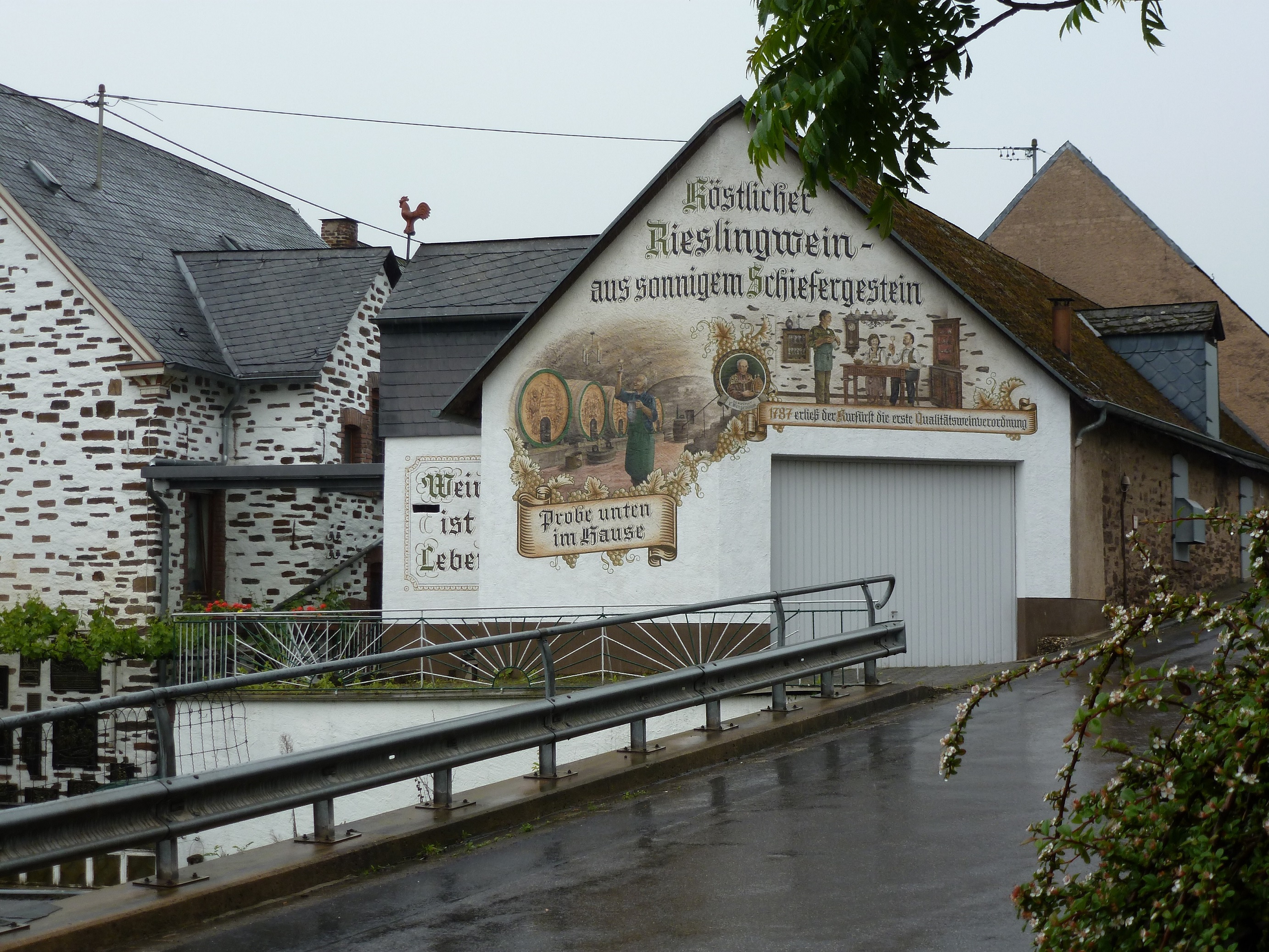
Our first view of the Moselle Valley during the short thirty mile drive to the pretty village and campsite of Pommern was obscured mostly by the cloud and rain. We should have listened to earlier warnings of rain soaked sites, as the next morning even after a dry night and wheel mats under the front drive wheels we were stuck. So out came the Boy Scout/ Ray Mears folding spade and two little trenches were cut, (then filled after). Lesson learned. The rain seemed to have forgotten us now and was replaced by warm sunshine as we drove along the valley, keeping our new waterway friend on our nearside and vineyard covered hillsides on the other.
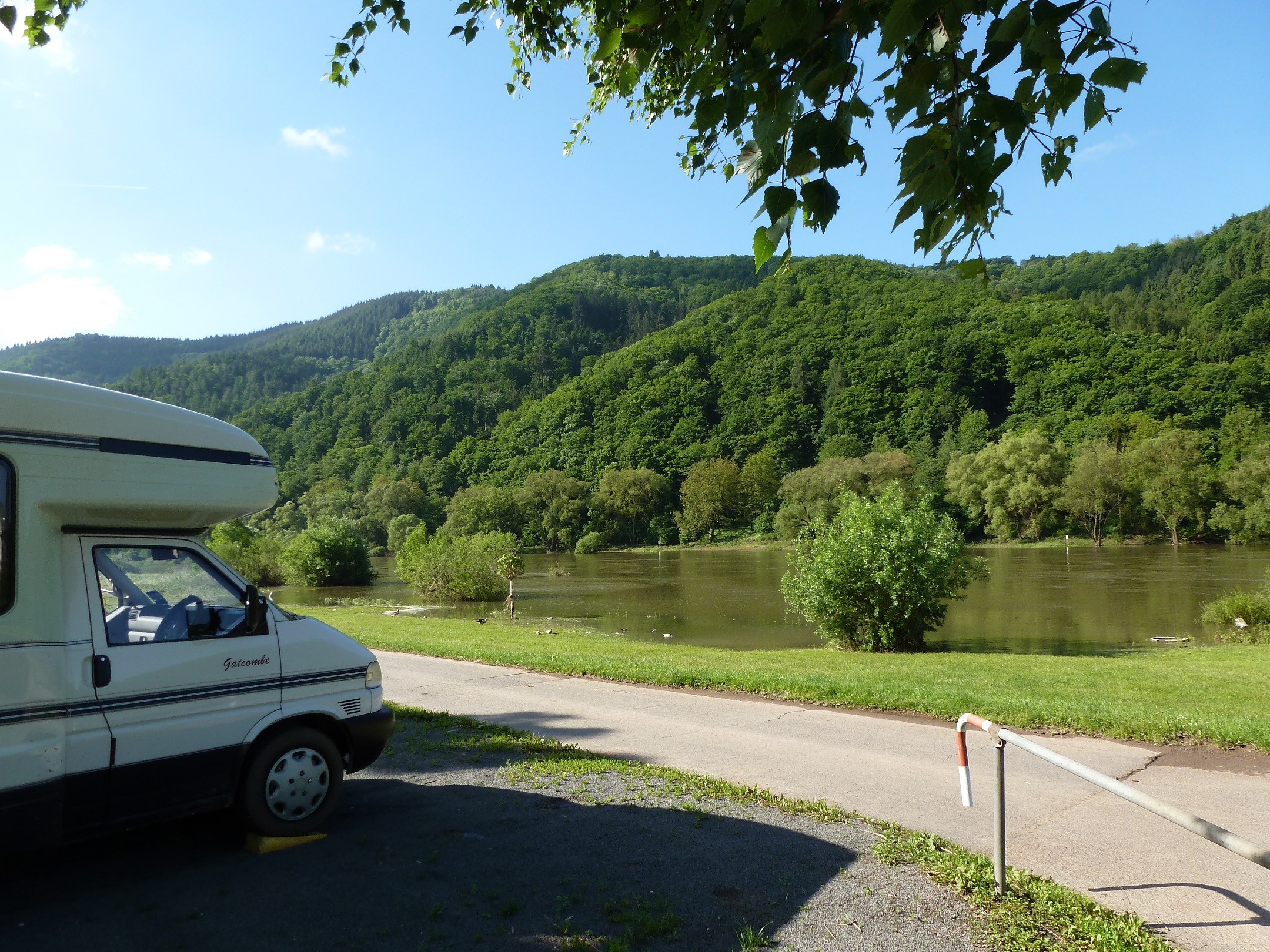
Booking in at the lovely little campsite on the edge of Edigar-Eller the warden, who like most of the wardens on the trip spoke good English, told us that the site had been under a foot of water the week before. We asked for and were given a good hard standing pitch with river views. To keep us on our toes the Moselle level would rise, and then fall, then rise again due to the upstream locks and flood gates. The Moselle cycleway, the Moselradweg, which goes 193 miles from Metz in the south to Koblenz in the north passes right by the campsite. This lovely area, still only about forty miles from Koblenz, just asks to be explored.
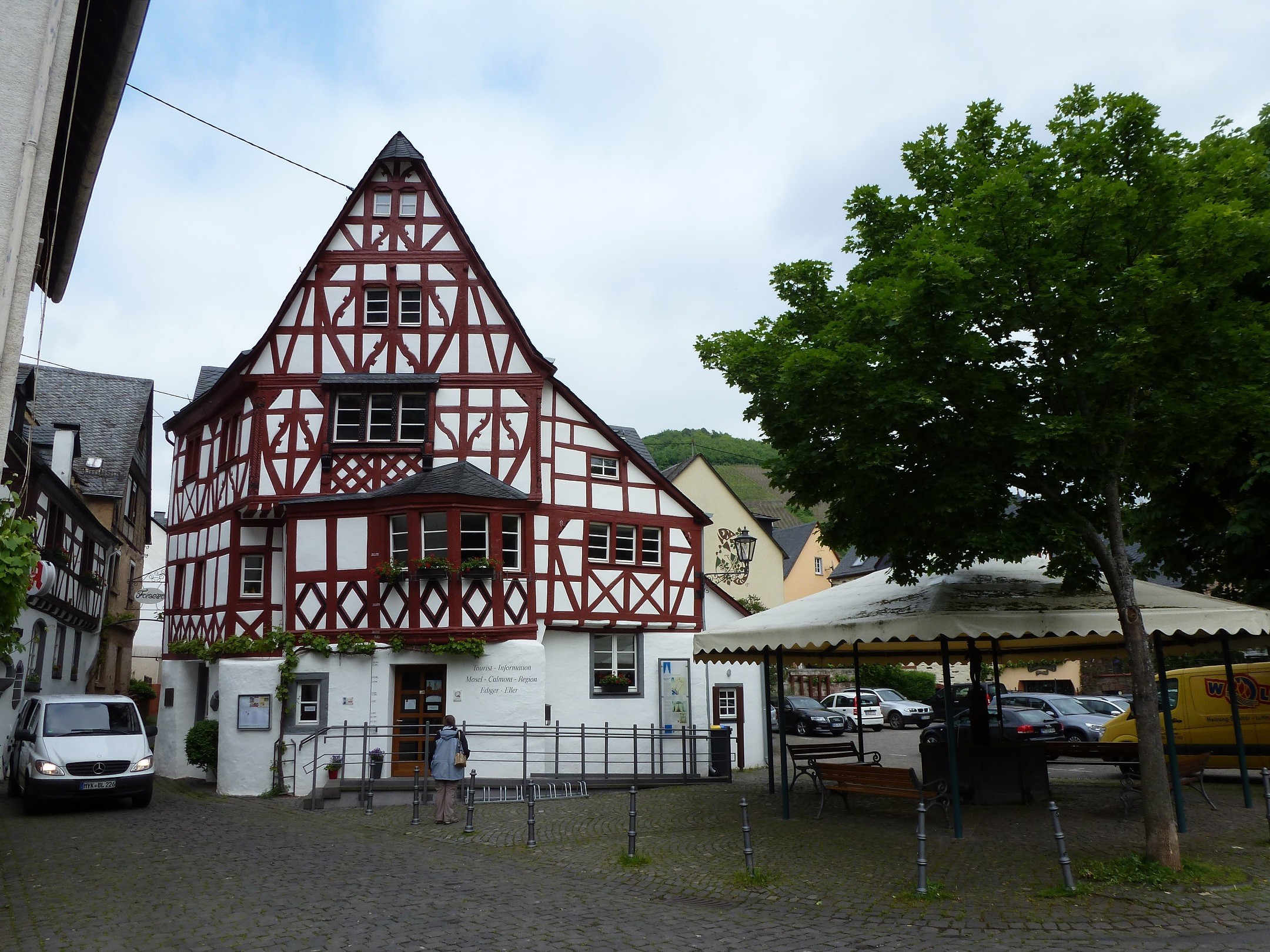
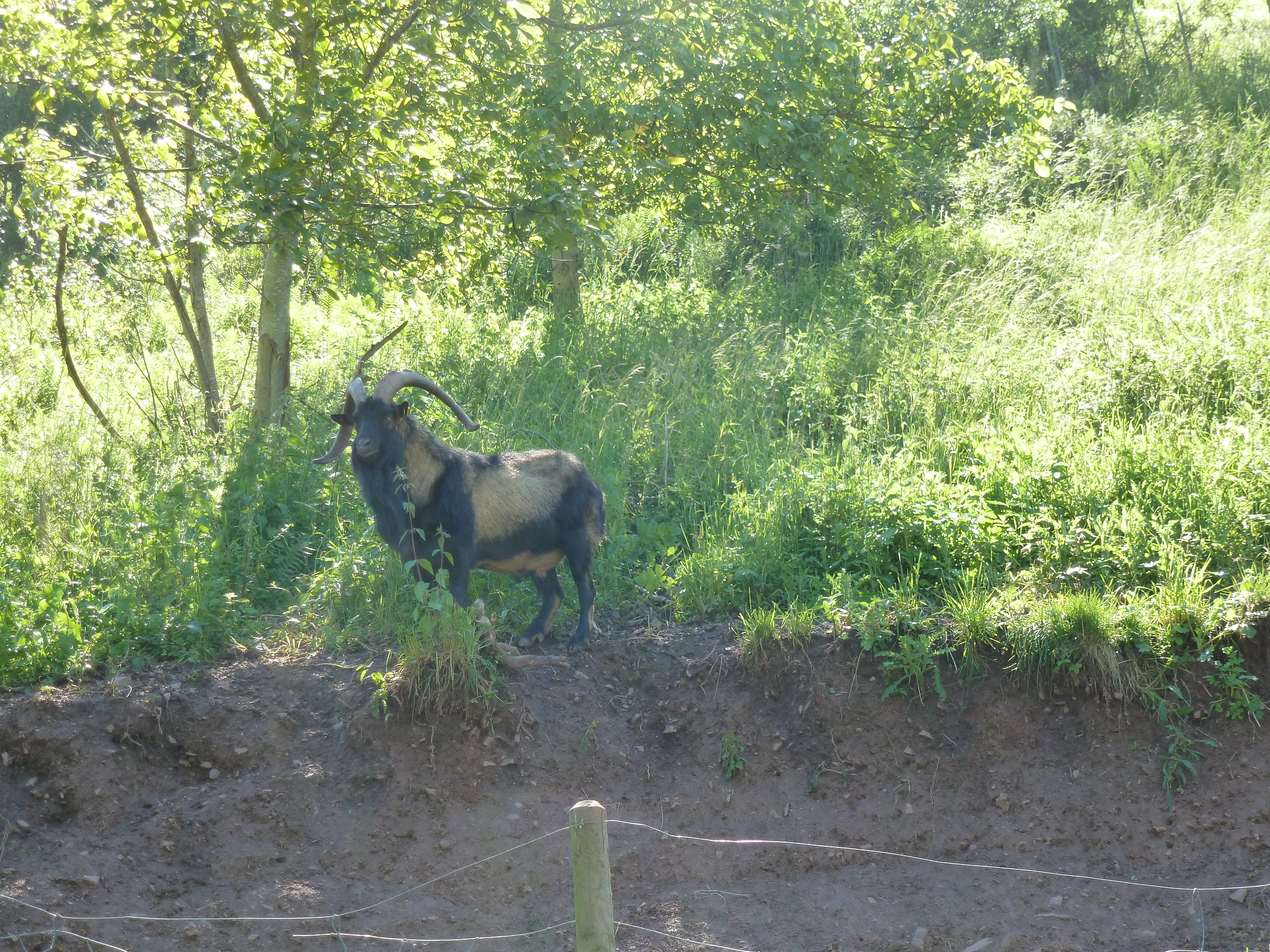
One fine morning we decided on a local walk, firstly this took us past the little Tourist Office where local walk sheets are available, then through the peaceful village and uphill into the woods. As we slowly made height we kept getting a whiff on the breeze of something quite pungent. As we turned a corner there on an outcrop stood a huge magnificent Billy goat, mystery solved. After a while longer of steep uphill walking we reached the goal of our trek, a charming little chapel nestling in the trees perched on the hilltop. With its doors unlocked it beckons you in to admire and appreciate the simplicity of its interior.
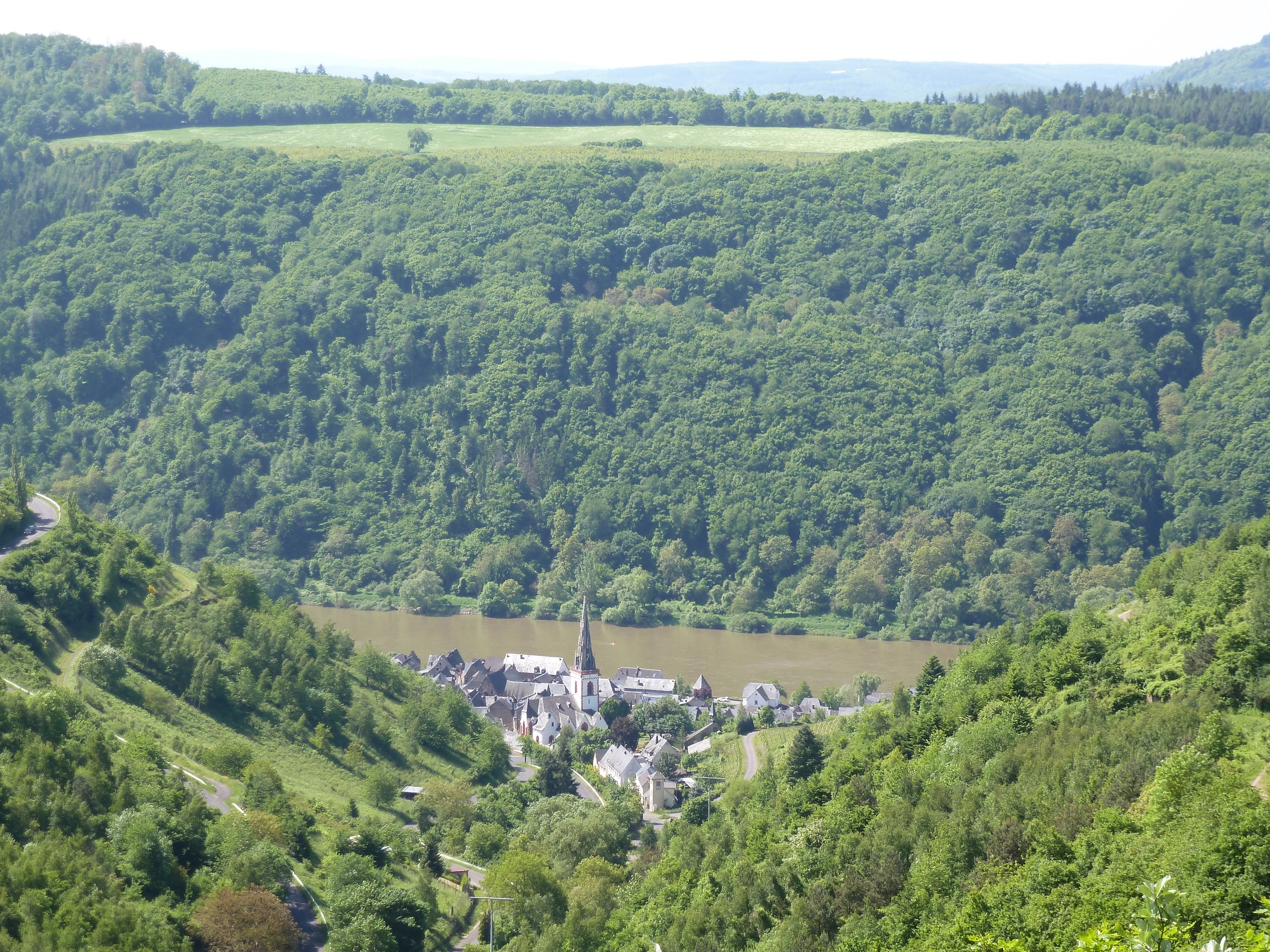
Outside there was a convenient seat to enjoy lunch and take in the wonderful view down and out to Edigar and the Moselle below. Another local walk from the site was to and around the twin villages of Edigar and Eller. Both villages have numerous old half timbered houses and wine producing buildings.
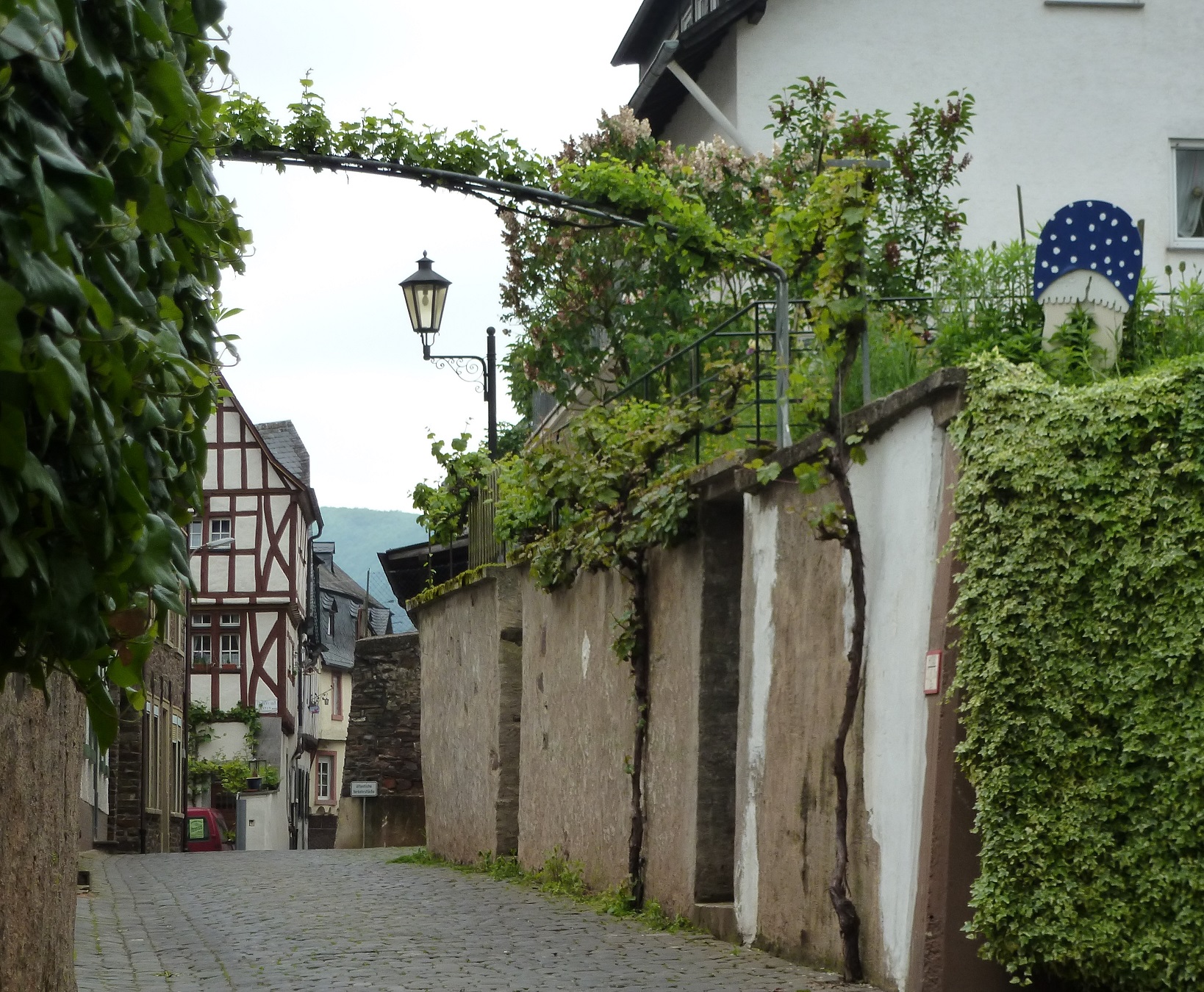
One local custom seems to be to train a street-side grown grapevine up a house wall then over the street on a wire and to the other opposite house wall and along as far as it will grow. Along the roadside are small squares, cafes and wine caves to entice you in to try their wines and brandies, which of course we did. One evening we watched a helicopter spraying the hillside vineyards behind the campsite, some of the local vineyards are reputed to be the steepest in the world at sixty degrees, flying at these low levels is certainly not for the faint hearted.
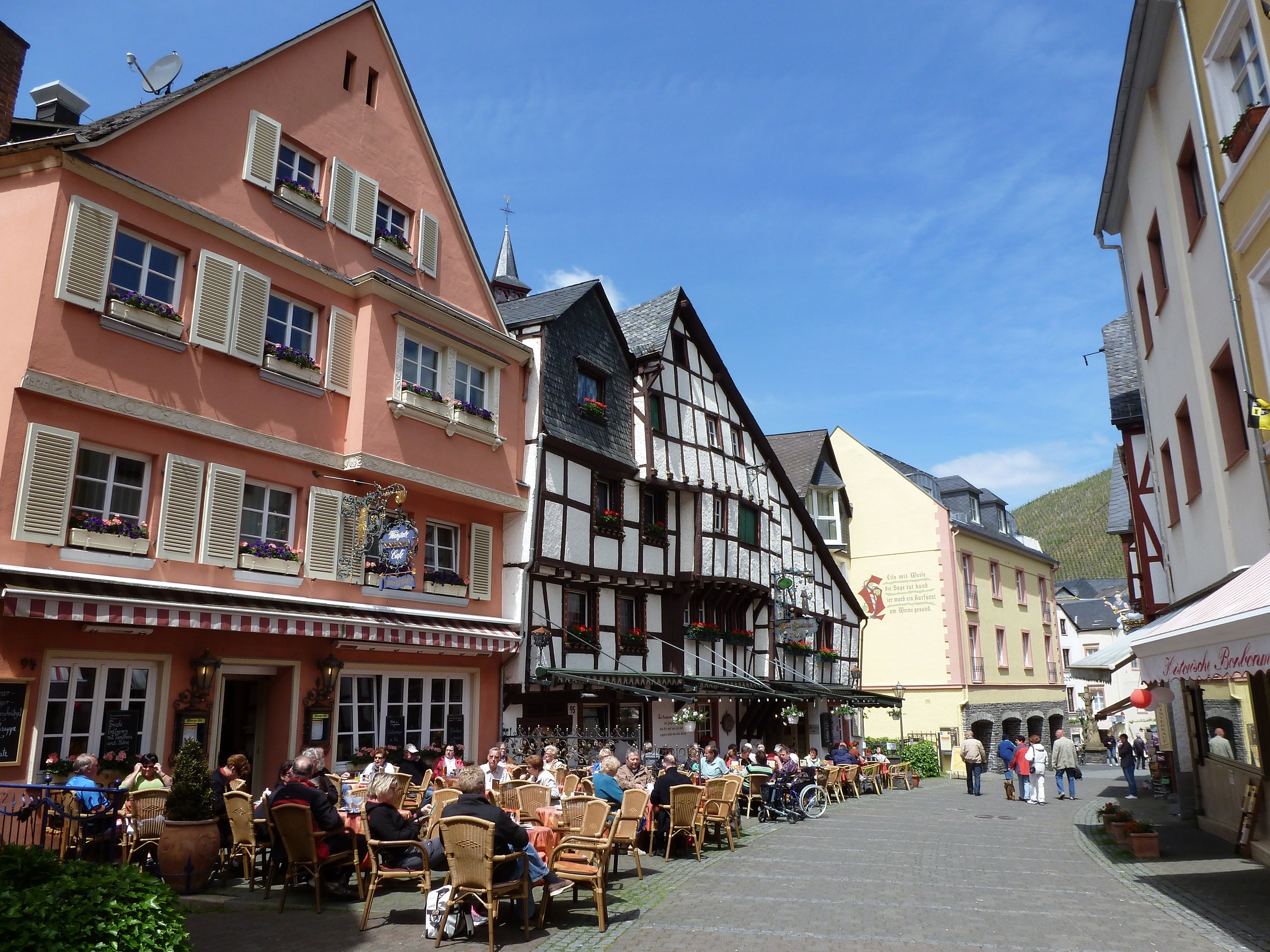
The next place our guide recommended was worth a visit was the dual villages of Bernkastel-Kues. Parking couldn’t have been easier, right alongside the Moselle on the Kues village side, all hard standing was free daytime parking for motor homes. So with only a half mile stroll along the river and over the old bridge and you’re in Bernkastel village.
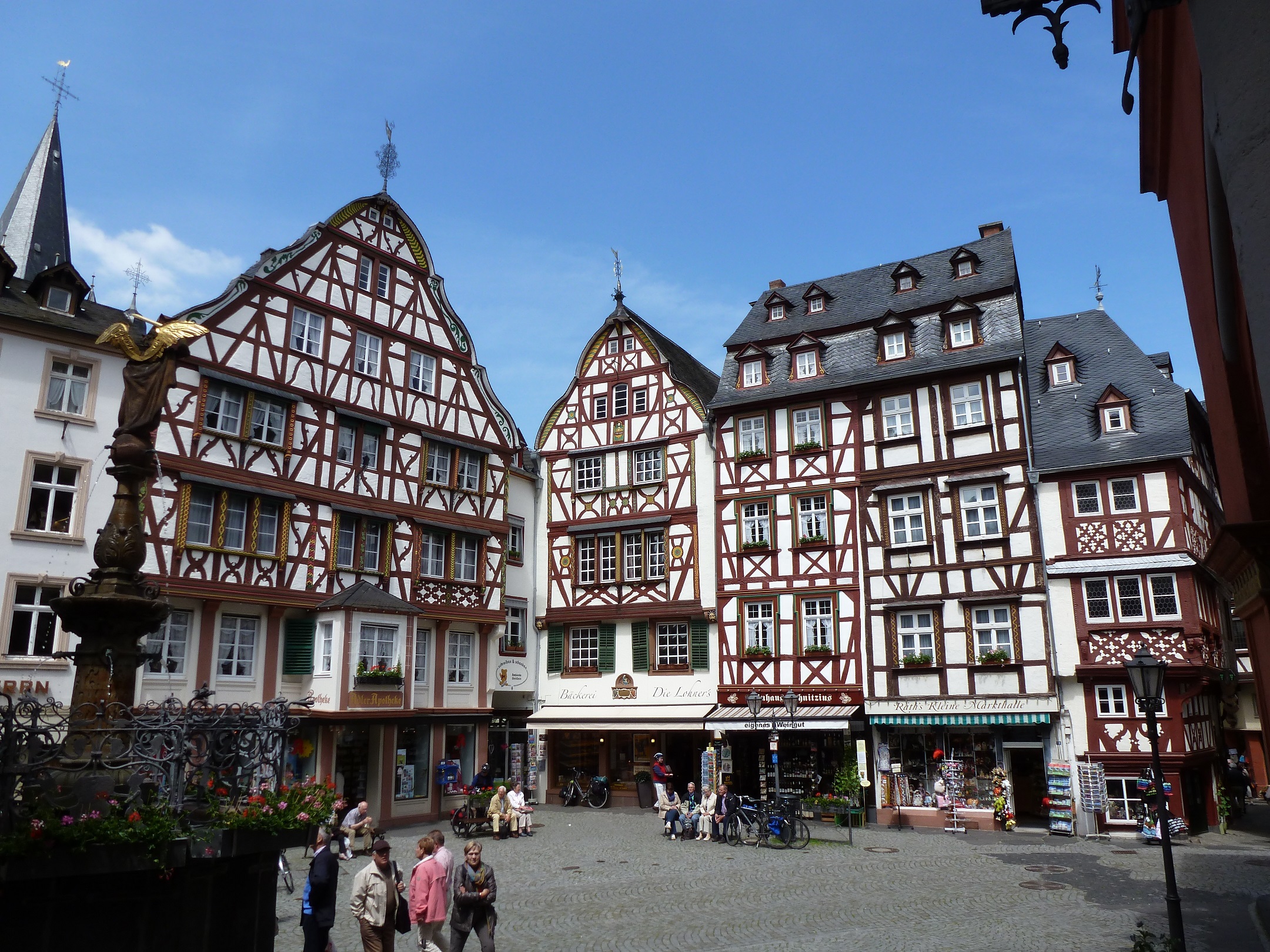
What a glorious place, not very big but crammed with half timbered buildings of all sizes. Most being around or next to the Marktplaz, a meeting place of narrow streets lined with a mix of touristy gift shops and eating and drinking dwellings. Just off this main attraction through a small walkway is an old church set within a small square. A lovely calm place to sit on one of the many seats for a snack. There is no mistaking that this was, in times past, and probably still is, a very wealthy part of the local area.
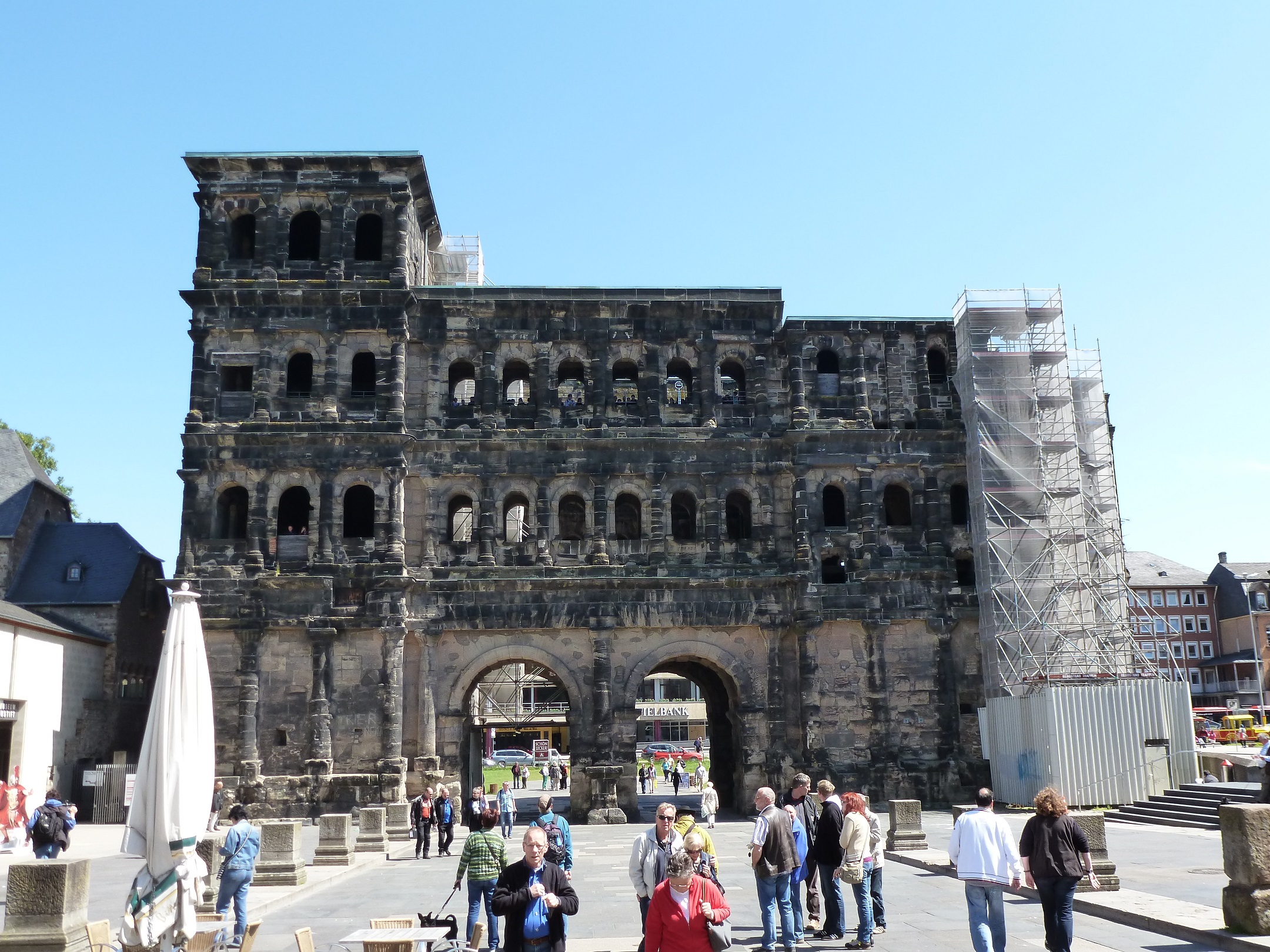
After overnighting at the riverside campsite at Scweich the next place of interest had to be Trier, Germany’s oldest city. The nearest convenient parking seemed to be next to the park and ride in the free car park about one and half miles out. Every cloud they say, as once again it’s a comfortable walk alongside the Moselle (passing a stellplaz) and over the old bridge into Trier. Whilst the huge Porto Niga (The Black Gate) with its gift shop, guided tour complete with Roman Centurion all looked impressive somehow it seemed like a film-set. Making up for this disappointment the squares, especially the large main one just off from the Cathedral complex, with the tall individually designed buildings around its edge are magnificent. Along with the colourful flower stalls and pavement café’s it encourages one to linger. Although we walked the length of the avenue Karl Marx’s house was listed as being on we couldn’t find the dwelling, so that box remains un-ticked. Whilst our Rough Guide to Germany quoted numerous places of interest in this old city our preference is really more for the smaller towns or villages and with the temperature now in the low thirties cooler places beckoned.
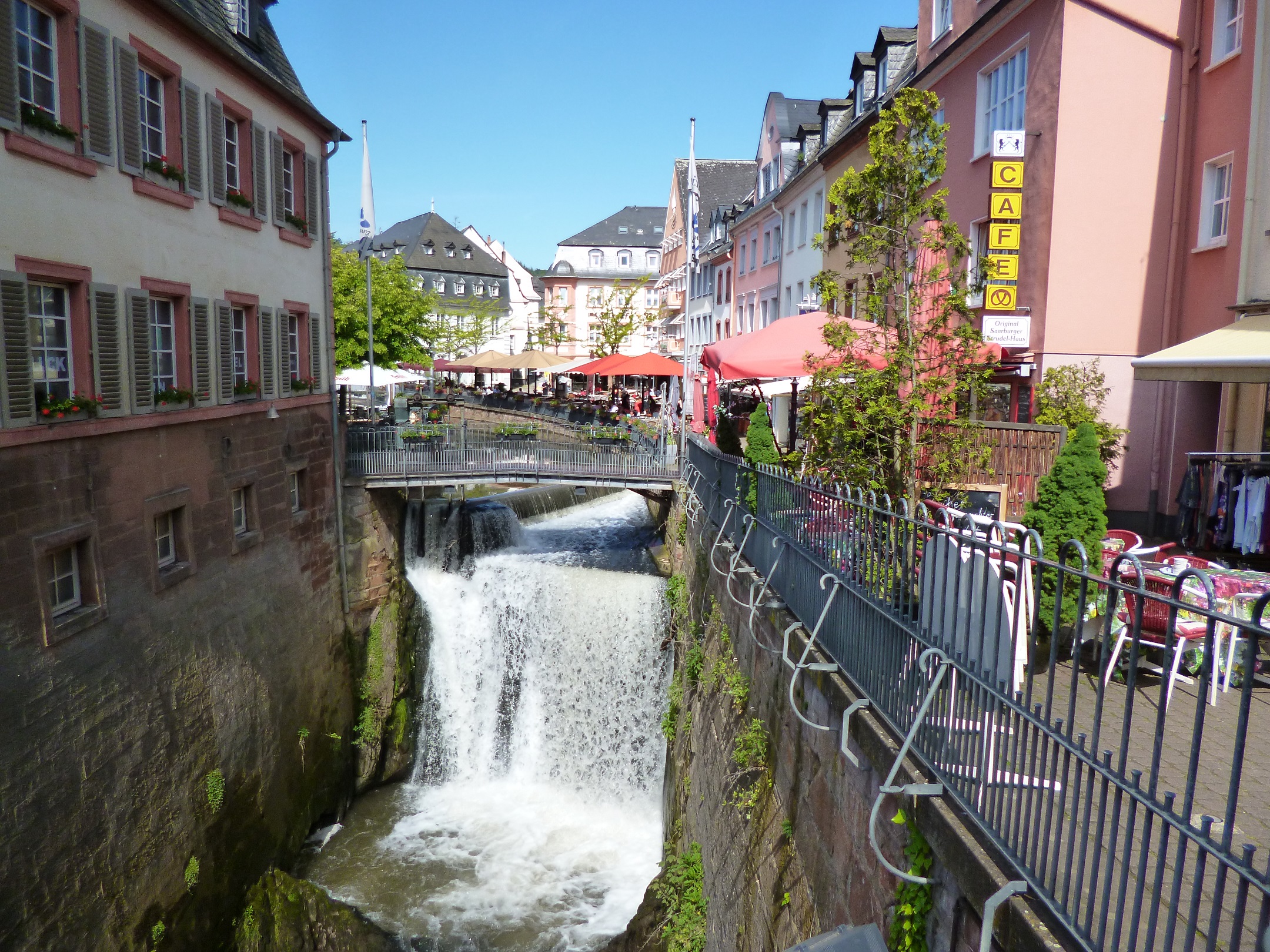
Still driving south we edged slightly to one side of our watery route to explore the unusual village of Saarburg. The river Saar which bisects the village is actually a tributary of the Moselle. The lovely small campsite on the outskirts of Saarburg is nestled in the hillside trees, which with the rising temperature made for some welcome shade. A cool walk through the trees and alongside a stream for about a mile and we were in the village. What a surprise, the small river Saar flows right through the village centre and cascades thirty feet or so down waterfalls then drives three waterwheels before leaving the village to join its parent river, the Moselle downstream near Trier. Although not a huge place Saar has a reputation of cultivation of the Riesling Grape for the well known locally produced wine. It also houses the only foundry in Germany to cast bronze bells. The entry for the foundry museum can be included in the small museum for the waterwheels joint ticket. The latter being located directly behind the waterwheels showing their large drive gears etc. well worth the two euros. A morning soon slipped by strolling around this charming village with its street-side cafés overlooking the small river.
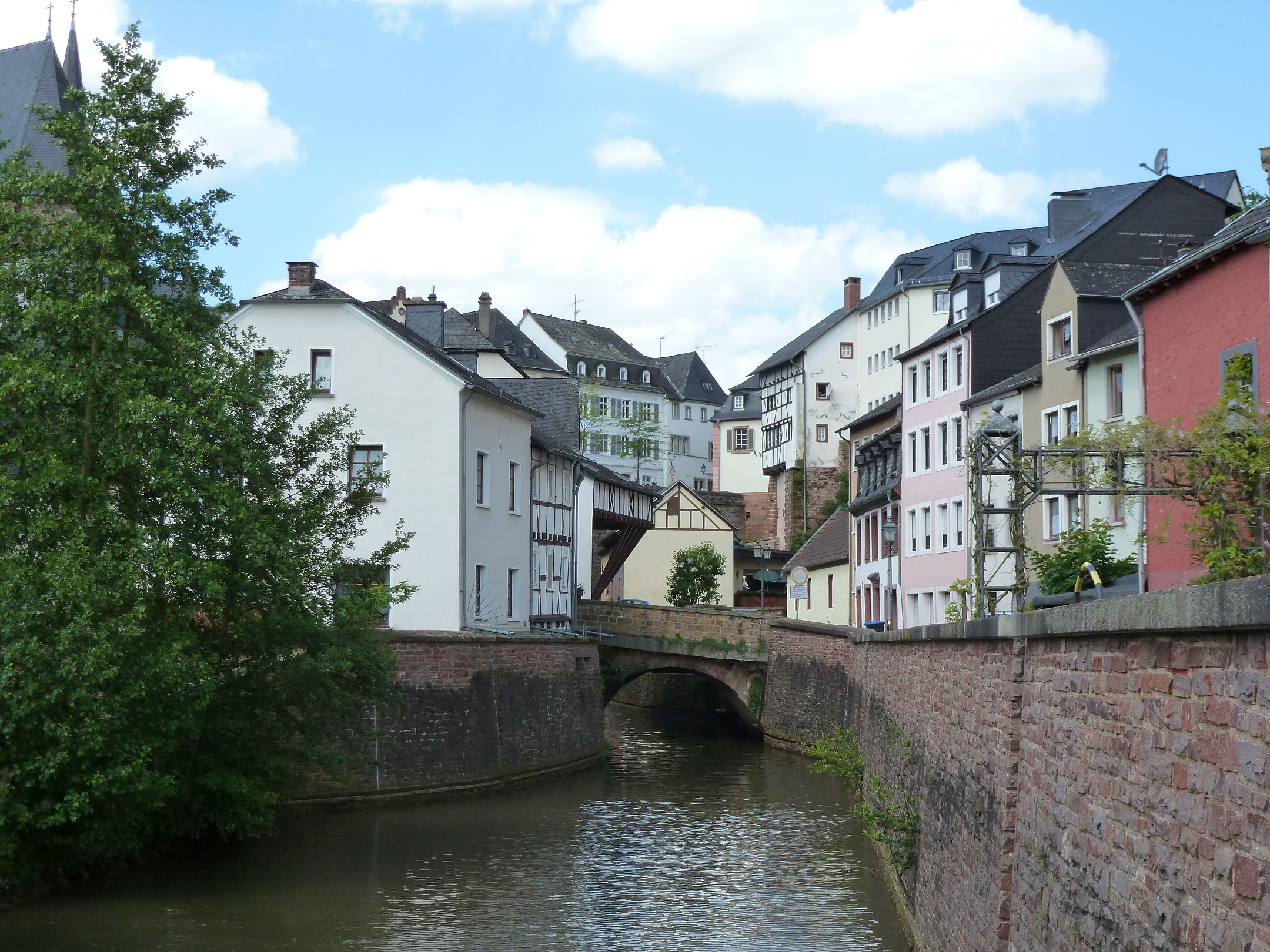
Looking down the backs of some of the waterside houses with their quaint little bridges you could be in Venice, without the crowds. After a few days chilling out at this little gem of a place we drove the short distance to rejoin our friend The Moselle. We were now going to enter France but prior to doing that we took advantage of being along the edge of Luxembourg and tucked in to fill up with Diesel (saving £20 on French prices).
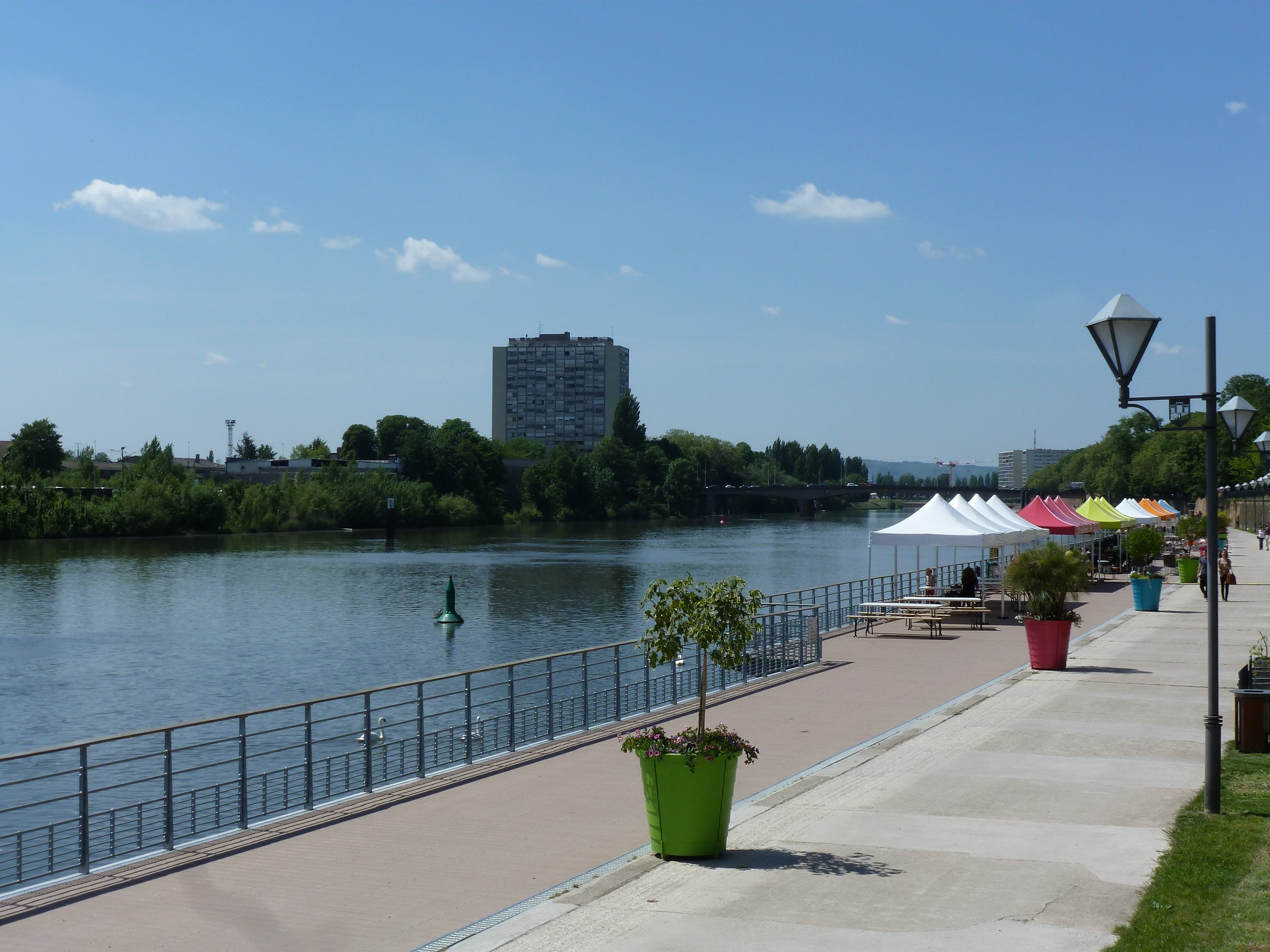
Now in France at the lovely campsite at Thionville. With a well laid out park with mature trees and fragrant rose garden on one side and above a promenade overlooking the Moselle on another, this is an ideally placed site. We arrived at midday within minutes of reception closing for a four hour lunch break, why do they do that? Granted they were polite and helpful but not sure you would wait four hours before the barrier was lifted. Now 180 miles along from our start at Koblenz. Sixty miles on and then the pretty campsite at Villey-Le-Sec. Again on the banks of our friendly river, which had slowed and became a bit narrower. From the site there were some good flat cycle rides along the rivers banks. One ride goes over the large flood and lock gates then cycles along a narrow spit of land with the river one side and a lake the other for about a mile or so, rather strange.
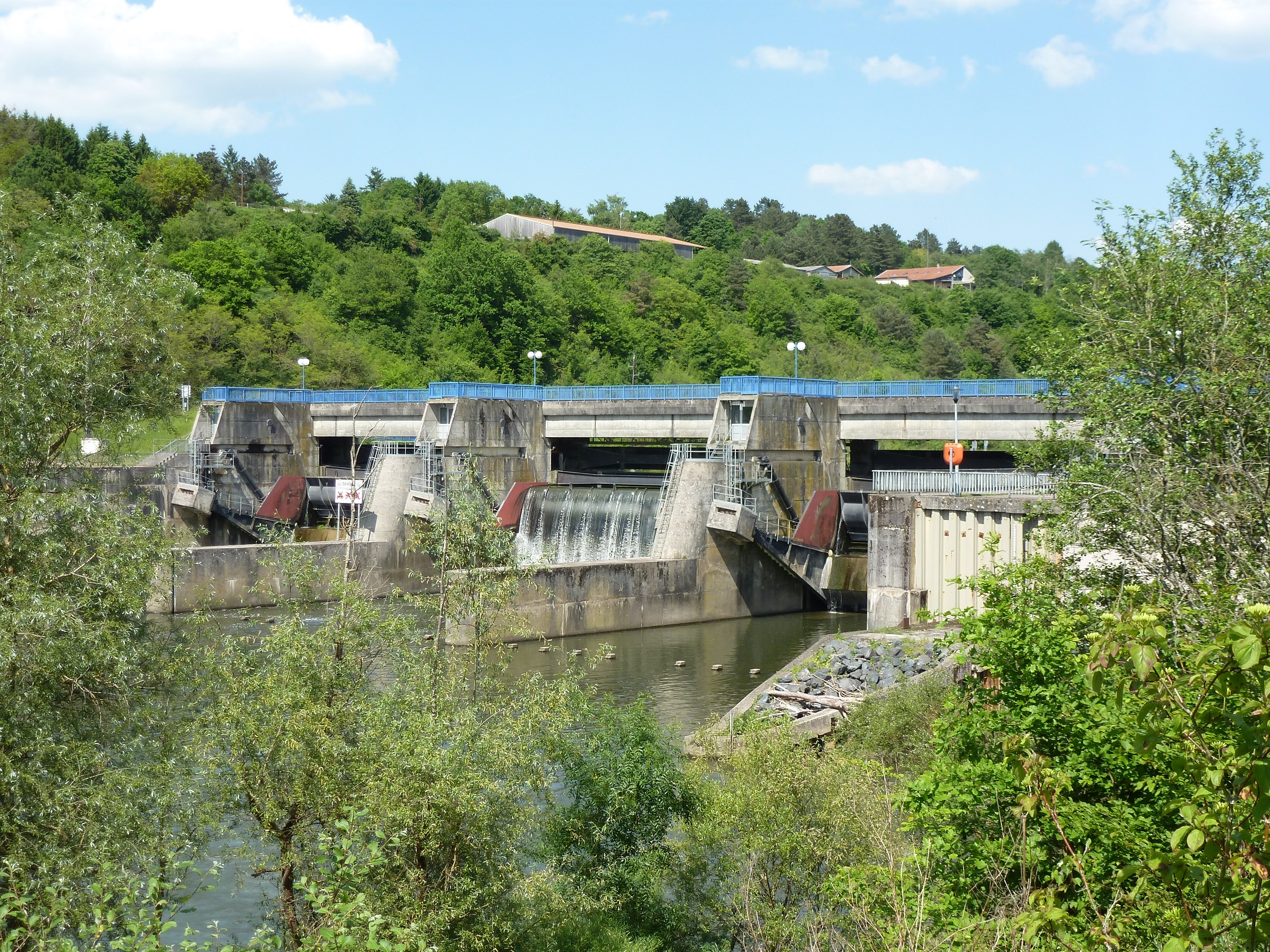
These big flood gates have been all along the river, controlling the waters height, what the valley would have been like without these after the recent rains can only be imagined by seeing the water level marks at various places. Alongside these huge structures are long locks to enable both the pleasure and commercial craft freedom of movement. Our next overnight village was Charmes, must have been named with tongue in cheek, although pleasant enough along the riverside.
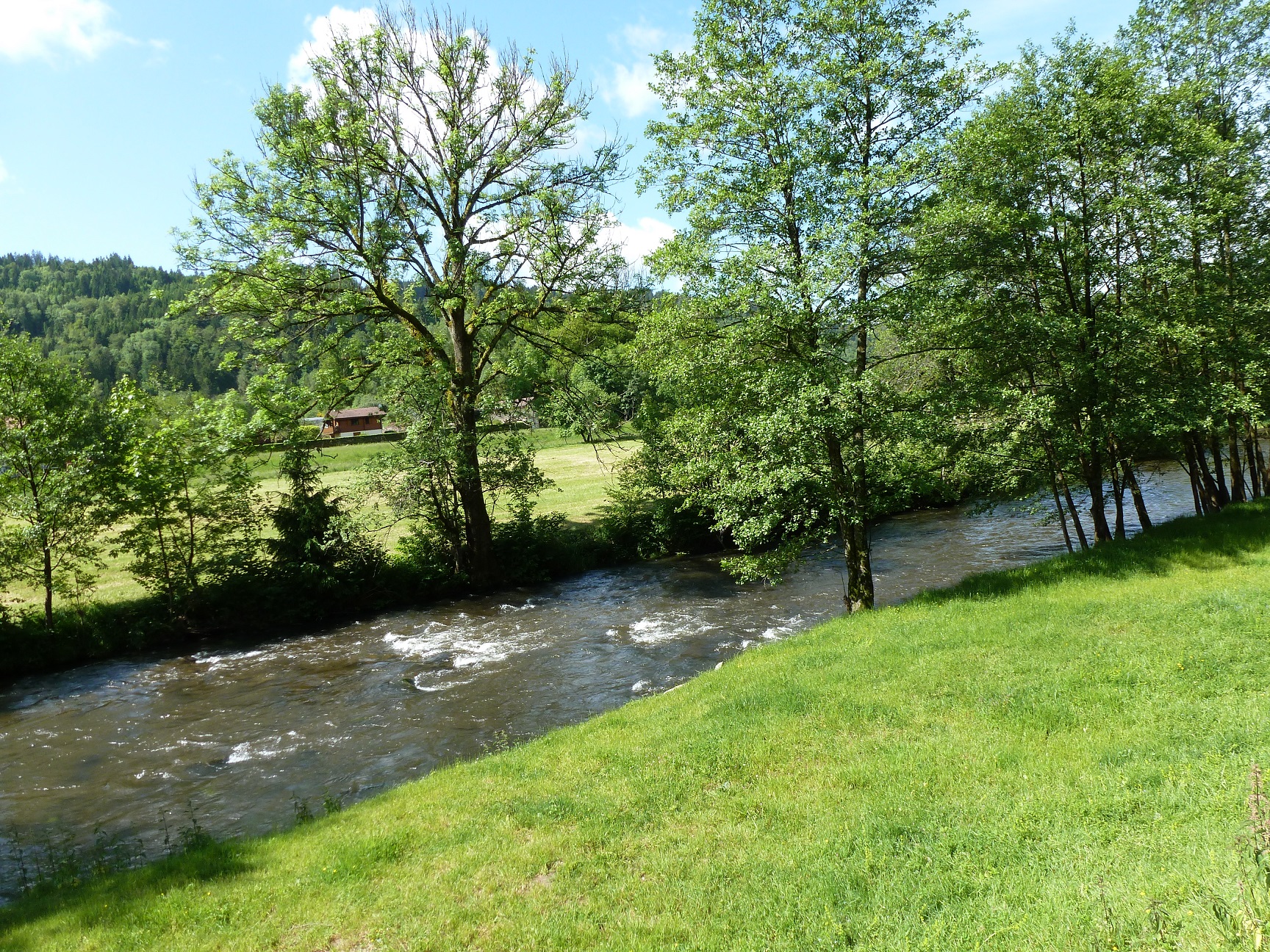
Leaving next morning we only had about fifty miles to drive alongside our ever smaller water companion to our last campsite and be within striking distance of our goal, the river Moselle source. The scenery had changed now to be a lot more wooded and the rolling hills were becoming dome shaped individual hills. As we approached the small village of Maurice sur Moselle the hills (or Ballons to give them their local name) were now much steeper and higher. This village played host to the delightful campsite we would be staying on for the next few days. The site was ideal with gravel and grass mixed pitches amongst the trees, even a young stream tributary of the Moselle running through it.
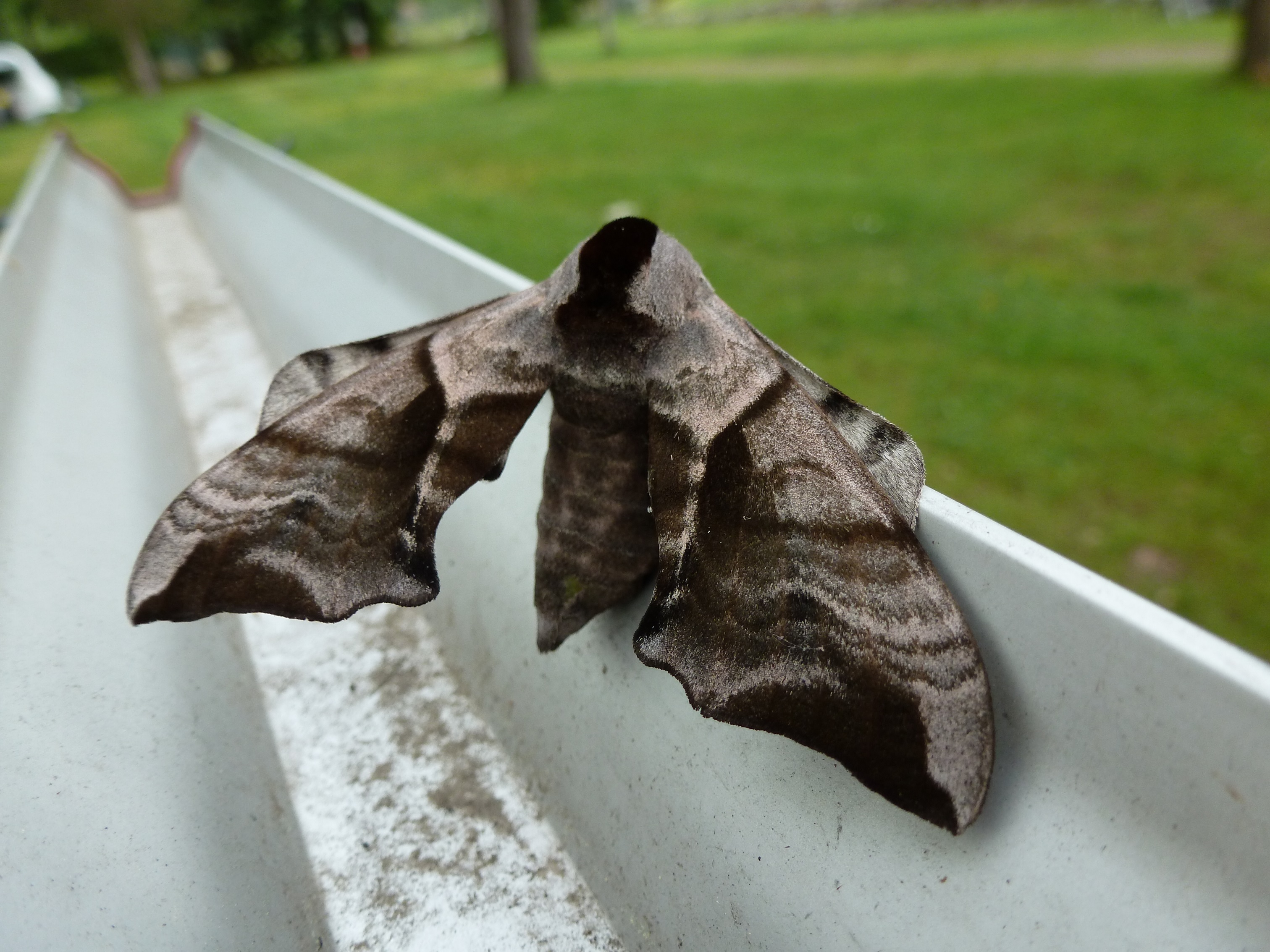
A treat here was seeing an Eyed Hawk Moth next to the van.
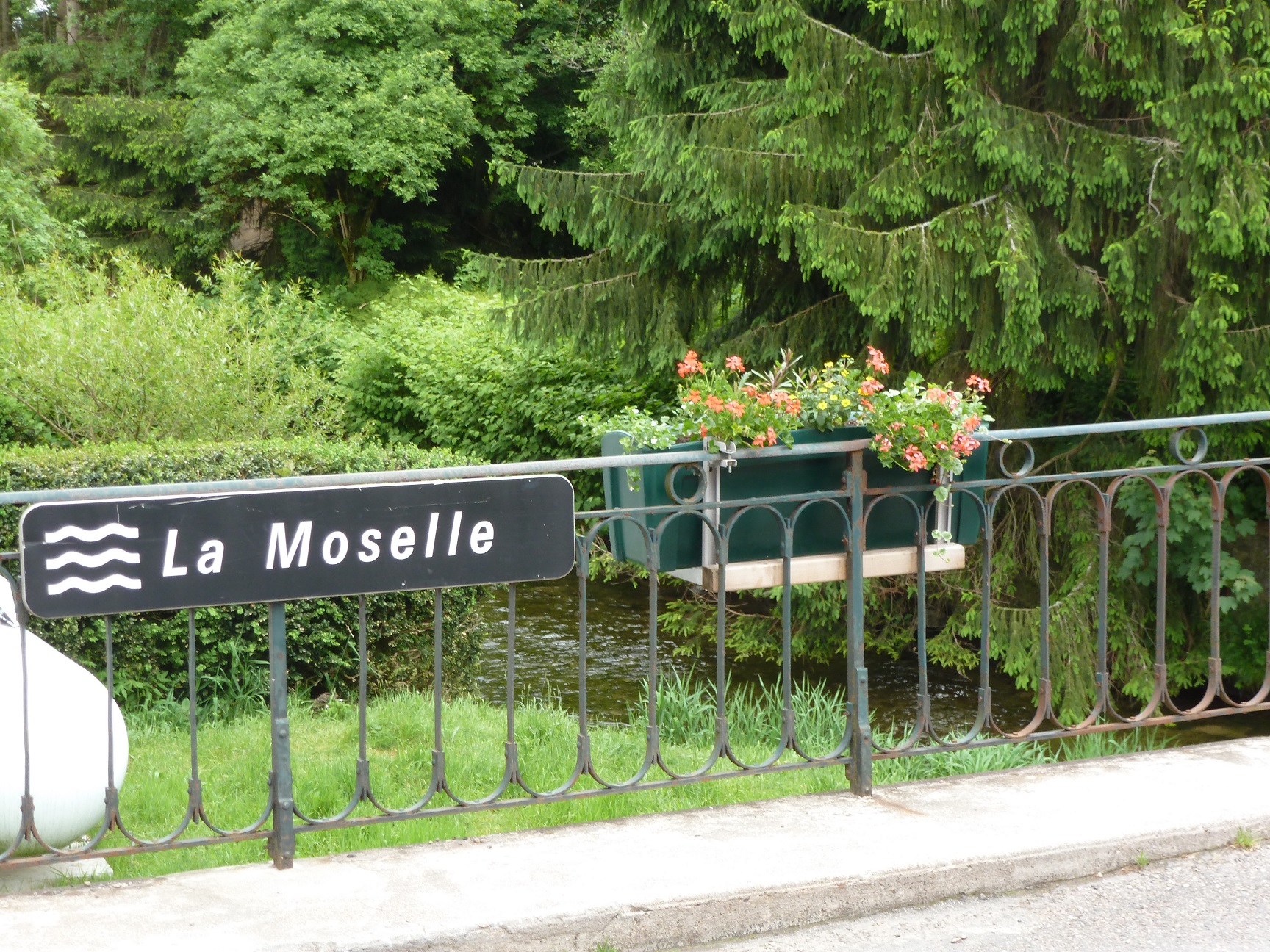
Next morning with our bikes and ourselves pumped up for the final six mile uphill push we set off. It became quite a lovely ride, off road most of the way, partly cycle track, part country lanes, eventually too steep to cycle. 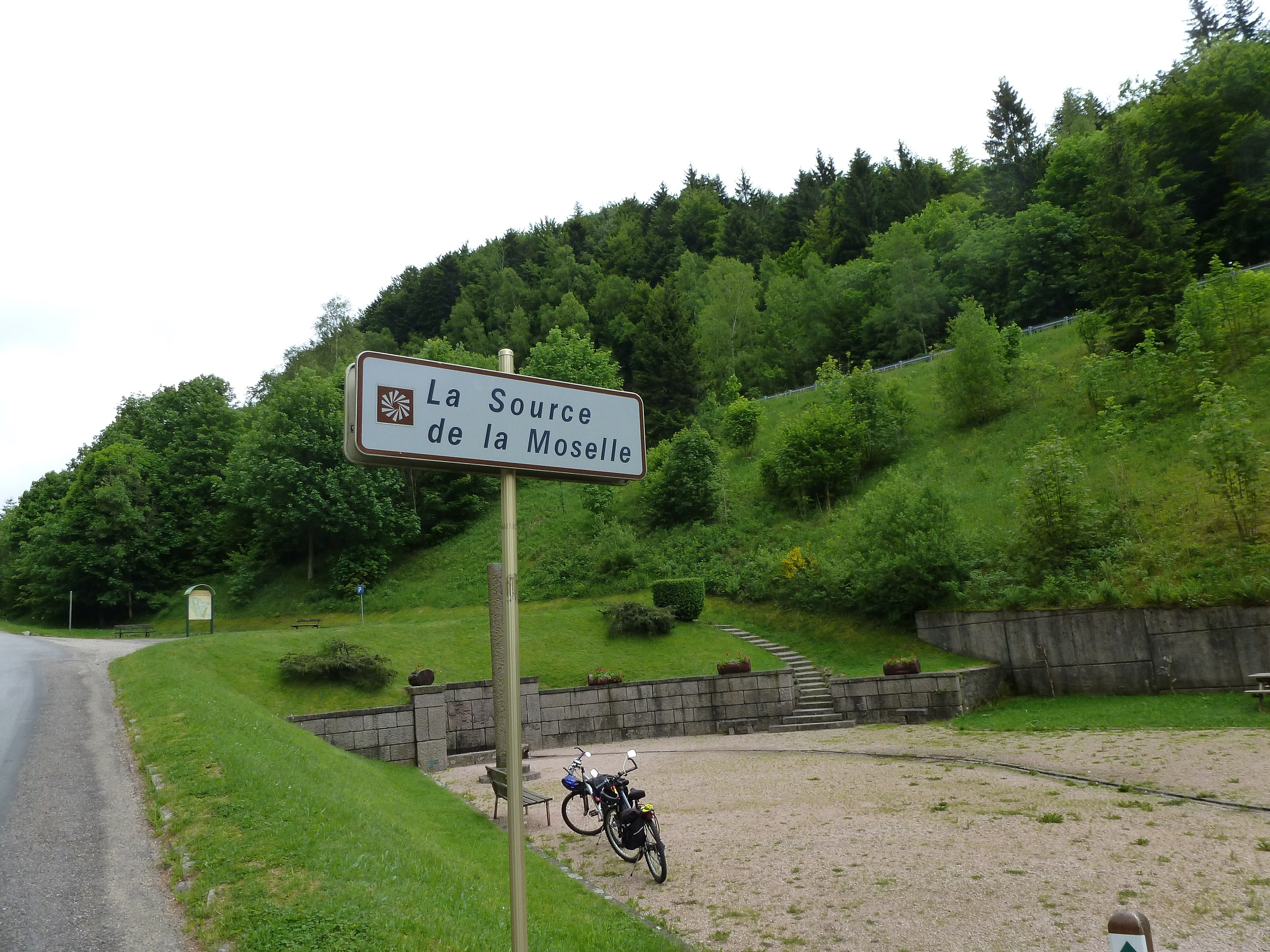 Rounding a bend there was the welcome sign, “La Source de La Moselle”. The official spring and plaque showing a detailed route of the twisting river’s journey from here to its joining The Rhine three hundred and thirty miles away at Koblenz was a pleasing tribute to this great river. After sipping the cool water from the spring’s trickling stream we enjoyed an exhilarating downhill ride back to our campsite to get ready to embark on stage two of our trip, The Villages of the Alsace. That’s another tale.
Rounding a bend there was the welcome sign, “La Source de La Moselle”. The official spring and plaque showing a detailed route of the twisting river’s journey from here to its joining The Rhine three hundred and thirty miles away at Koblenz was a pleasing tribute to this great river. After sipping the cool water from the spring’s trickling stream we enjoyed an exhilarating downhill ride back to our campsite to get ready to embark on stage two of our trip, The Villages of the Alsace. That’s another tale.
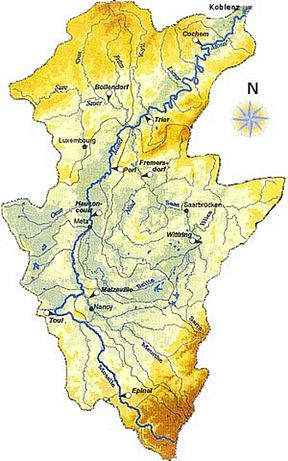 The Moselle, from the Mouth at Koblenz to the Source at St.Maurice sur Moselle
The Moselle, from the Mouth at Koblenz to the Source at St.Maurice sur Moselle
